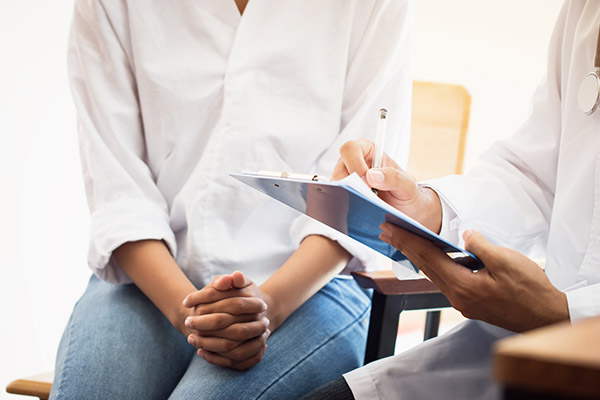By: Jackie Johnstone, CNM
You have heard about endometriosis and know friends and family who may have it. What is it exactly?
What is endometriosis?
It is a very common health problem in which tissue that normally lines the uterus (the endometrium) grows on the outside of the uterus.
Common places where the tissue is found: around the ovaries, fallopian tubes, bladder, intestines, ureters, rectum, and behind the uterus. Rare cases have shown it to be in the lung, brain, and other soft tissue.
How common is endometriosis?
It is estimated to be found in 6-10% of women of reproductive age and 25-35% of women who have infertility problems.
What causes endometriosis?
The exact cause of endometriosis is unknown. Some theories suggest retrograde menstruation is responsible for the abdominal tissue growth. This means once the lining of the uterus sheds during menstruation the tissue then passes through the fallopian tubes. Once it is in the pelvic cavity the tissue implants into surrounding tissues.
Other theories suggest that there is a genetic component. A few studies have found that 7-9% of women with endometriosis have a first-degree relative that are diagnosed with endometriosis. There are other theories that exist, but none have been proven.
How exactly does endometriosis affect women?
The tissue that has grown outside of the uterus responds to hormonal changes just as does the tissue inside the uterus. The tissue implants, grows, and bleeds just as the lining of the uterus does during the menstrual cycle. The breakdown and bleeding of the tissue can cause adhesions which in turn may cause pain, especially during menstruation. Endometriosis can cause infertility by interfering with the fallopian tubes and causing adhesions within the tubes. 40% of women with endometriosis have infertility problems.
What are the symptoms of endometriosis?
The most common symptom of endometriosis is pelvic pain before and/or during menses. Heavy bleeding may also occur. If the tissue is connected to the bowel, one can experience diarrhea or constipation around the time of menses. The tissue can also be connected to the bladder resulting in urinary issues. In some instances, women will experience painful intercourse.
How is it diagnosed?
Endometriosis is diagnosed by a laparoscopic procedure where a small incision is made into the abdomen or pelvis, and the surrounding tissue and organs are evaluated.
More often than not medical management is the first line of treatment for endometriosis before a laparoscopic procedure is carried out. Thus, the symptoms are most often treated before the actual diagnosis being made.
How is endometriosis treated?
Treatment is individualized based on symptoms. Many times the pain is relieved by medications such as Ibuprofen and or hormonal therapies such as birth control pills, progesterone only methods, and medications that block the production of estrogen. Hormonal methods slow the growth of the tissue and can help keep hormonal levels steady so that the tissue does not go through hormonal fluctuations which then in turn cause symptoms. Often, if these methods do not help, a laparoscopic procedure is carried out, and the tissue can be removed. It is not guaranteed that the tissue will not grow back. Surgery can improve pain and fertility. As a last resort, a hysterectomy can be considered. Endometriosis is less likely to come back if the ovaries are removed.
Helpful Patient Resource: Visit endofactpro.com website.

